Tag: Elizabeth McGinn ’21
Veritas: Be Proud of All Truths
by The Cowl Editor on April 11, 2019
Campus
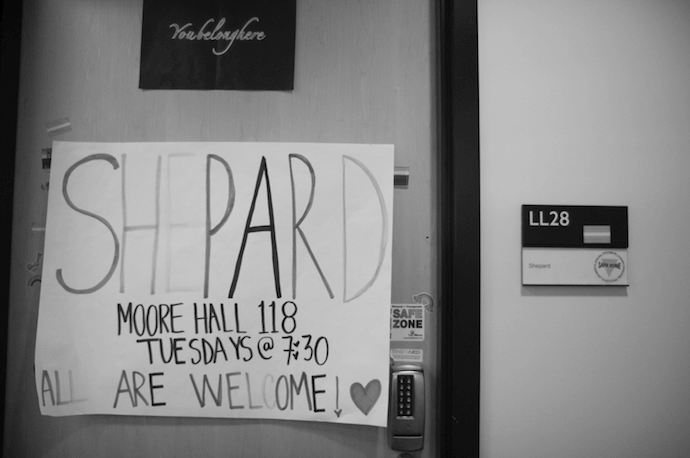
The motto of Providence College is Veritas, meaning truth. The search for truth grounds education, community interaction, and student life in a quest for knowledge. However, this truth only goes so far: it solely extends to beliefs that align with Catholic teaching.
Last year, Stopping Homophobia, Eliminating Prejudice, and Restoring Dignity (Shepard) and Board of Programmers (BOP) hosted a week celebrating PC’s LGBTQIAA+ community on campus under the name “PC Proud.” The event was a hit and gave a voice to an underrepresented portion of the student population. The two clubs attempted to host the event again this year, but received backlash from the administration about its name.
After months of planning, the two clubs received news that the administration objected to the use of “Proud” in the name of the event. Administration took issue with this particular naming of the event because Pride is an internationally recognized organization whose political agenda, namely the fight for the legalization of gay marriage, goes against Catholic teachings.
Because the notice from the College about the lack of official approval came only two weeks before the event was set to take place, the two clubs were sent into a whirlwind trying to rescue their hard work. They later decided upon the name “Open Hearts” to emphasize the community aspect, but merchandise was already made with the name “PC Proud,” resulting in a financial loss.
Additionally, Shepard organized a speaking engagement as part of the celebrations featuring the president of Rhode Island Pride. Again, the administration objected to this particular speaker as unlikely to align with Catholic beliefs.
As the only club that represents the interests of the LGBTQIAA+ population on campus, Shepard especially seeks to reconcile Catholic teachings with their own community. The vice president of Shepard, Jolssen Rodriquez ’21, stated that during events and planning, “We have to remind ourselves a lot about what the school’s mission is and how we can have these conversations through that mission.” The unique position of Shepard as the voice of a marginalized community in a Catholic college prohibits their full engagement with the campus by fulfilling the missions of the College.
Despite the best efforts of Shepard to serve the LGBTQIAA+ community through a Catholic lens, it comes at a cost of their freedom. The Catholic Church traditionally protests against LGBTQIAA+ rights, including same-sex marriage. As a result, Shepard is in a unique position of catering to the Catholic Church or protecting the interests of LGBTQIAA+ students.
As a college, PC has a wider obligation to the rights and wellbeing of their students. Censoring the name of an event forfeits its duty to students and also interferes with the College’s mission for Veritas. In the search for truth, all access to all possible truths is critical for knowledge.
For a community that has been historically discriminated against, being proud of their identity is essential to empowerment and self-love and acceptance. It does not promote arrogance or any sin; simply a reclamation of one’s identity. While Open Hearts week is a sweet name, it lacks the connotations and nuances of the original title.
Rodriguez ’21 said, “Shepard wants to amplify that voice that the community might not think they have, but they do.” In minimizing that voice, it also limits the autonomy, power, and acceptance of LGBTQIAA+ students and allies alike.
As a foundation of PC’s mission,Veritas should stand for all truths, irrespective of religion. Even more importantly, PC should be proud of all its incredible students.
Writer vs. Writer: Does Social Media Foster Creativity?
by Andrea Traietti on April 4, 2019
Opinion

YES by Elizabeth McGinn ’21
Social media unfairly has a horrible reputation; upon a deeper look, however, creativity is actually bolstered by social media.
Artists can use apps to promote their content to the world with the press of a button. From graphics and comics to makeup artists and food blogs, Instagram and other forms of social media provide the perfect platform for self-made creators. Without needing to pay for screen time or print advertisements, all forms of art can easily reach a wide audience.
Instagram, even at its most basic level, can spark a renewed interest in photography. Visual creativity is often underscored as an art, but it can create stunning images of modern life.
Influencers, despite the poor public image of some, also contribute to this creative process. New clothing lines can sponsor an influencer, whose followers then are exposed to the up-and-coming brand. Novice fashionistas can scour Instagram for new outfit ideas and potentially establish an influencer page themselves.
For the traditional artists, Instagram bypasses the elitism of the art scene. Before social media could act as a platform for displaying art, most creators had to personally know someone to share their content.
By uploading to Instagram, however, each artist can individually promote and showcase their works to prospective buyers.
In particular, graphic artists of comics enjoy a renaissance on social media. The creation of memes, which usually requires humor and design skills, floods apps with entertainment. Through these talents and platforms, the artists can relay their success into established graphic design or continue to captivate the world with their hilarious memes.
While Instagram relies on photos, Twitter focuses on words. In a maximum 280-character Tweet, users must carefully choose their words, and successful tweets require careful deliberation. Developing humor in 280 characters is surely an art form that creates joy in everyday life.
Instagram and Twitter are some of the most popular apps among college-aged students, but several others exist that can also provide an opportunity for creative flourishing, like editing and design sites. The next time you take a picture for Instagram and search for the correct lighting and angle, enjoy your creative process.
NO by Alyssa Cohen ’21
While social media has engendered improvements in communication, connections, marketing, and self expression, the risks such online networks present may run deeper than fostering social ineptitudes in America’s youth—they may also be depleting younger generations of their creative potential.
While social networks establish a valuable public forum for artists and other creators to publicize their work and inspire others, they prove a more significant hindrance in enabling an individual to explore his or her creative potential in the first place.
Despite the fodder for creativity social media provides, such networks concurrently present a more significant distraction from harnessing this creative energy needed to actually create.
Essentially, as a large percentage America’s youth endures an addiction to social media, in accordance with the societal glorification of being busy, contemporary teens and young adults no longer grapple with boredom.
The majority of contemporary youth keeps an iPhone at their fingertips that perpetually enables the individual to extinguish any sense of boredom instantaneously through accessing social media.
In turn, the majority of American teens and youth possess few creative hobbies, as they no longer experience the mental stimulation that impels the creative process in an effort to fill the void.
To that end, rather than utilizing free time as a means of self discovery through the creative process or engaging in activities evocative of the creative spirit, many people scroll through an endless stream of posed photos of people they may barely know.
Essentially, the depletion of creative spirit that social media engenders, aside from the glorification of superficiality and the mental health concerns that such online networks impose, proves pernicious to American culture at large. Generations of uncreative adults will undoubtedly lend to a stagnancy in art and innovation within our society.
That considered, once modern teens and adults can acknowledge their addiction and instill an awareness in themselves of when social media usage is hindering them from exploring their creative process and consciously appreciating the world around them, social media may be utilized as a tool of innovation and expression rather than a suppressor of creativity.
Bernt Out: Why Sanders Should Stay Out of 2020
by The Cowl Editor on March 21, 2019
Opinion

that he would be running in the 2020 presidential election. Photo courtesy of Flickr.
by Elizabeth McGinn ’22
Opinion Staff
In 2016, Bernie Sanders threw his hat into the ring to run for president. Although he fell to Hillary Clinton in the Democratic Primary, he announced his intention to run again in the 2020 race against incumbent President Trump. While Sanders promotes a progressive platform, he should refrain from running in 2020.
The Trump Administration has seen its fair share of controversy, from the government shutdown to allegations of collusion with Russia during the 2016 election. The 2020 race is critical for the country; it is the opportunity to continue the Trump Administration or elect a new, democratic president.
A slew of democratic politicians have already stated their intention to run, including Elizabeth Warren, Kamala Harris, and most recently, Beto O’Rourke. Sanders, despite his failed 2016 run, has joined them.
During the 2016 election, Sanders appealed widely to the millennial generation with the slogan “Feel the Bern.” His progressive politics, including free college education and the continuation of universal healthcare, touched the hearts of many young adults who had just reached the age to participate in politics.
Despite falling to a more traditional establishment candidate in 2016, Sanders’ announcement to run again in 2020 has ignited new hope among the youth. A desire for change, for equality, motivates this young democratic-socialist movement.
While Sanders’ platform is undeniably progressive, he is simply not the candidate to challenge Trump’s campaign. In the 2016 upset, even Clinton, a promising candidate, lost to Trump. Since Sanders lost to Clinton, he is the runner-up to the runner-up. If the Democratic Party truly aims to unseat Trump, Sanders’ track record disqualifies him from serious consideration.
Younger candidates, like Harris or O’Rourke, are more relatable than Sanders. Born decades later, the two hopefuls can represent a new age in American politics. In contrast, the age and experience of Sanders roots him firmly in the status quo. At 72, incumbent Trump also finds his home in the older generation.
A progressive platform is the key to the success of a 2020 Democratic candidate. A solid stance against Trump’s politics best gives Americans a second viewpoint to choose from. Though Sanders may fit this broader category, he identifies as a socialist.
In Europe, socialist politics are old news, but in the United States, the definition carries a controversial connotation. During the aftermath of the Cold War, socialism’s similarity to communism threatened the idealism of a capitalist America. Although the actual meaning of socialism differs greatly from communism, the public opinion may be too averse for Sanders’ election. While younger politicians, like Alexandra Ocasio-Cortez embrace the term, its status in the language has a long way to go before a president should classify him or herself as one.
For the Democratic Party, 2020 can be a turning point: reclaim the candidacy, reclaim the future of the country. Trump’s unique appeal as an outsider to Washington and a strong personality requires the need for a particular and special opponent.
Sanders, though appealing to youth, does not have what it takes to beat Trump. However, his support among the millenials and youth will be essential to a Democratic victory in 2020. As college students, the young adults of Providence College will be a key demographic target in the election. It is our chance to choose wisely.
Tangents and Tirades
by The Cowl Editor on February 28, 2019
Opinion
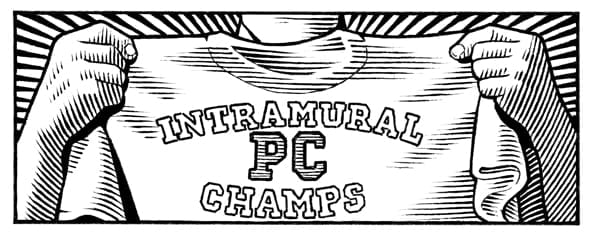
Extra-Murals: Make Intramurals Casual Again
Joining an intramural team is usually a fantastic way to be active, socialize, and try to win the infamous league T-shirt for the sports’ best team or players. While it can be fun and games (excuse the pun), sometimes getting beaten mercilessly by dodgeballs can take part of the amusement away.
Some teams can be in it to win it all, and they recruit the best of the best, even varsity and club athletes. Stacking teams in this way, mixed with sheer competitiveness, results in an utter beatdown and demolishment of the other teams.
For those teams and players that join for enjoyment only, getting pummelled, despite one’s best efforts, detracts from the meaning and overall experience of intramural sports.
For the more popular sports, like ultimate frisbee or soccer, two leagues are offered. The A league is more competitive, while the B league is more for recreation. While this works in theory, some athletes join the B league for less competition and easier wins. And in less popular sports, no division exists at all.
A solution to this problem could be the introduction of an option when registering a team that identifies it as competitive or non-competitive. The teams can still play in the same league, but know what to expect when game time comes.
A more competitive team can play with less ferocity, managing to gain the win without compromising the honor of the opposing team. The non-competitive team will fully achieve its goal of enjoyment without the embarrassment of a total loss.
—Elizabeth McGinn ’21
10 p.m. Mass Time: A (Mass)ive Improvement
Chaplain changed the classic, school-wide favorite 10:30 p.m. Sunday Mass to 10 p.m., due to a survey they asked students to participate in during the previous spring semester.
While 30 minutes may not seem like a substantial difference, the 10 p.m. Mass is far better than the 10:30 p.m. Mass time and saves students a considerable amount of time to sleep and finish up school work for the week ahead.
The 10:30 p.m., now 10 p.m., Mass has always been a student favorite. At this Mass, one should expect the chapel to be packed with fellow Friars, a chorus’ of amazingly talented student singers and instrumentalists, a beautiful homily, and, of course, post-Mass bash.
So, of course, there is a strong reason why PC students prefer the later Mass time over the other options. PC student Maddie Reilly ’20 describes 10 p.m. Mass as “a truly awesome way to end your weekend and start your week.”
Sunday nights are always daunting for students as they are cramming their work in for the week to come while also trying to catch up on some sleep. The chance to get an extra 30 minutes of sleep or extra time to do work before heading to bed is crucial for college students after a busy weekend.
While some may argue that the 10:30 p.m. Mass gives students more time to finish their work before Mass, so far almost a year into this change of timing, the majority of PC students seem to have a favorable opinion of this earlier Mass time and would like it to remain this way.
If you or any of your friends have never been to 10 p.m. Mass, be sure to check it out and see what all the hype is all about.
—Marie Sweeney ’20
Procrastination Is Not the Key to Success
With two midterms, papers, and analyses, last week was hectic to say the least. This overwhelming feeling of every line in our agendas being full and the constant feeling of unrest are relatable to many college students.
Another feeling the vast majority of students can relate to is procrastination. In your head you say, I know I have to do this; but do I have to do it now?
It almost seems as if for some people, or at least myself, the more I have to do, the more I find myself leaving everything until the last minute. This results in incessant stress that builds inside us.
You are not calm because you know you have to do something, but you are stressed because you are not doing it. This could have an easy solution that could abruptly terminate your tension.
Start doing the work early. And by early I do not mean early the day it is due, but early as in five days before.
As an innate procrastinator, I know the struggle. Something inside you pulls your body into your bed as soon as you want to start working on that paper or studying for that midterm.
You try to fool yourself by saying, I really do work better under pressure. Some people can procrastinate, but I am not one of them.
As true as these words may be, I would invite you to ask yourself, is procrastinating really worth all the stress?
You are going to end up doing it anyways. Do not be a masochist and cause yourself any more pain than you need to. Start early and leave the excuses behind.
—Angela Bueso ’22
Tangents and Tirades
by The Cowl Editor on February 14, 2019
Opinion

E-Tipping: Compensation for Dunkin’ Nation
Dunkin’ holds a special place in the hearts of Providence College students. The New England staple energizes exhausted students with its iced coffee, and employees always serve the much-needed caffeine with a smile.
However, since most students pay with a card, these employees could be missing out on possible tips. A solution to this problem would be the installation of an electronic tip option, as seen at other businesses, in which the customer can opt to tip through their card.
In some businesses, the electronic tipping occurs at the end of a transaction. A pop-up on the screen offers the customer to select a percentage to tip, usually ranging from 10 percent to 20 percent.
Other establishments offer a “round-up option” which gives customers the option to tip change up to the next full dollar. For instance, if a coffee costs $2.45, the remaining 55¢ can be allotted for tipping to reach a full $3 charge on the card. This works similarly to cash tipping, since the majority of tips from cash usually originate from remaining coins.
Since the Dunkin’ employees work hard to provide a valuable service, always with great effort and friendliness, an electronic option for tipping can demonstrate the appreciation for their dedication. In this way, students can thank the employees for making their beloved coffee. After all, PC runs on Dunkin’.
—Elizabeth McGinn ’21
‘Democracy Dies’ Ad Pays Respect to Journalists
Amongst the usual plethora of car and Bud Light commercials seen during this year’s Super Bowl, there was an advertisement that stood out among the rest: the Washington Post’s “Democracy Dies in Darkness” ad.
While Super Bowl commercials are usually funny and lighthearted, the Post took their ad in a different direction this year. They decided to highlight the importance of their work while also paying tribute to journalists who have been taken hostage and killed in the past few years.
The commercial emphasizes that “Knowing empowers us… knowing keeps us free.” It was a rare political message amid the usually light commercial breaks, but it was absolutely necessary.
The phrase itself, “Democracy Dies in Darkness,” is not new for the Post—it appeared on their website in early 2017—but the need for it persists. Another phrase, almost the opposite of the Post’s slogan introduced itself around the same time: “fake news.”
Introduced in the early months of President Trump’s tenure, “fake news” encapsulates the president and his cabinet’s idea that news outlets are not presenting facts and are instead exaggerating their stories as a way to gain support in opposition to the president.
This year’s commercial seems to recognize and respond to these opinions. It highlights the importance of facts and remembers those who were forgotten for what they suffered through in order to deliver those facts.
The ad was a poignant and touching tribute to the work of journalists and the importance of facts in this polarized society.
—Julia McCoy ’22
If DWC Work Leaves Ruane, DWC Books Should Leave the Library
As every freshman and sophomore at Providence College is enrolled in the Development of Western Civilization (DWC) program, the books required by most sections of DWC prove to be a hot commodity in the Phillips Memorial Library.
To that end, the library has implemented a policy limiting the use of their stock of DWC books to a two-hour check-out period within the library.
While this presents as logical, as these books are in high demand, it also proves problematic for students in situations where they may require book usage for a more extended period of time, such as when they are writing an essay or studying for an exam.
Additionally, the library is connected to the Ruane Center for the Humanities, which houses all of the College’s DWC classrooms. If students were allowed to leave the library with checked-out DWC books on occasions when they forget their books for class in their dorm rooms, students would be better prepared for class as they could quickly grab a copy from the library.
Not to mention the frequent circumstances where books for DWC become backordered in the bookstore, and in turn, a student cannot even begin his or her DWC reading until the book arrives, which in many cases consistently proves to come in the mail after their class has already read it.
Needless to say, PC students should not be obligated to resort to book theft to merely complete their DWC homework, as this dilemma can be easily remedied—-the College should invest in more copies of all DWC textbooks and allow students to check them out of the library to use at their convenience.
—Alyssa Cohen ’21
Writer vs. Writer: Have Recent Campus Additions Been a Good Use of Donor Money?
by The Cowl Editor on February 7, 2019
Campus
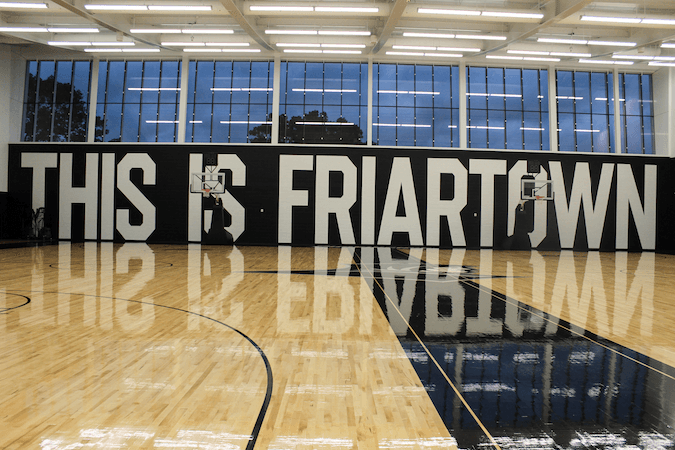
by Elizabeth McGinn ’21
In 2019, the beautiful Providence College campus is very different from the same grounds only 10 or 15 years ago. The busy Huxley Avenue used to separate upper and lower campus, and both dorms and academic buildings were outdated by at least 30 years.
Now, the picturesque campus is the epitome of a classic New England college. A plethora of new facilities, monuments, and buildings decorate the grounds. In beautifying the College, funds have been extremely well-spent.
Suites Hall, the Arthur F. and Patricia Ryan Center for Business Studies, the Science Complex, Ruane Center for the Humanities, Slavin Center, and the Ruane Friar Development Center are just a few of the new buildings to grace the campus.
In addition to the facilities, new features have also given the grounds a facelift. One of the most prominent changes to the landscapes is the elimination of Huxley Avenue, which created a unified campus.
By updating the campus and its grounds, all aspects of student life are improved, including academics and sports.
Within the past 15 years, almost all of the major academic buildings have been built or renovated. Through these modernizations, PC maintains its primary commitment to education. The newer buildings also boast the most up-to-date technologies, which aid students of all majors in learning.
However, some buildings have not yet been treated to a much-needed makeover, like Phillips Memorial Library. If the recent spending trends continue, hopefully the library will be next in line for a refurbishment.
Sports facilities have also been a focus of spending. The Ruane Friar Development Center, with study areas open to everyone, increases PC’s desirability for prospective athletes. Top of the line amenities also engender the best sports teams and players.
Through these additions and beautifications, PC can physically demonstrate its success to its community, alumni, and prospective students. The College has risen in status and prestige over the past few decades, and the campus and grounds reflect this.
Because a physically beautiful college attracts students and faculty, these updates will continue PC’s upward climb. We know how much heart PC has to offer, but now its exterior is finally equal to its laurels.
by Marie Sweeney ’20
College campuses all over the U.S. are constantly under construction to maintain their physical development and appearance, and Providence College is no exception.
In the past decade, PC has undergone several construction jobs, spearheaded by the Campus Transformation Project after the purchase of most of Huxley Avenue in 2013.
While PC has made some efficient and positive changes to the appearance and accessibility of campus within the past few years, the College is not utilizing its funds effectively or beneficially to promote the betterment of campus life.
While projects such as Huxley Avenue and the Science Complex have been successful and beneficial, there are several new structures and developments that are not necessary compared to other campus needs.
In the last few years, PC has faced a housing issue in which there is almost not enough housing available for the amount of students.
This has led several of the first-year dorms to not only implement forced quads, but also to assign sophomores to live in freshman dorms.
Additionally, a lot of the residence halls at PC have not been updated or renovated in decades.
Since one’s room on campus is a very important aspect of one’s life at school, this can have a negative impact on student life and the image of the College for prospective students.
The College needs to recognize the needs of students and prioritize them over massive structures such as the Calabria Plaza and the Ruane Friar Development Center. Catherine Flugel ’20 said, “The college needs to focus their attention on more important projects that students have spoken out about. I just don’t understand the purpose of some of the newer buildings when there are so many other more urgent fixes.”
While physical beautification, renovation, and upkeep of campus is important to maintain PC’s image, the college needs to recognize that student comfort and contentment is just as, if not more, important.
The allocation of funds should be focused on improving outdated buildings such as Aquinas Hall and St. Joseph’s Hall or even to construct a new residence hall to fix the housing issue. This will create a more comfortable environment for students and have a positive impact on student life.
Love: A Rebellious Choice in the Face of Suffering
by The Cowl Editor on January 24, 2019
Opinion
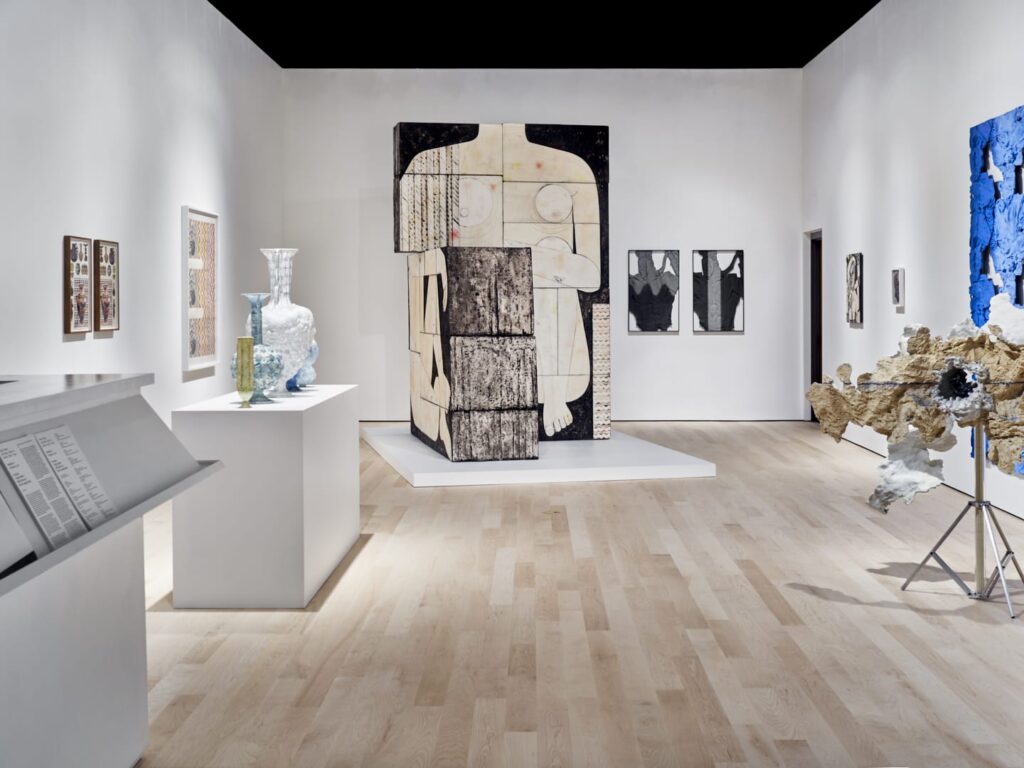
by Elizabeth McGinn ’21
Opinion Staff
Friedrich Nietzsche once wrote, “To live is to suffer, to survive is to find some meaning in the suffering.” For Nietzsche and many others, suffering and pain are common emotions in human life.
Everyone, regardless of status or identity, endures it; however, what one chooses to do with that experience vastly differs from person to person.
Turn on the news at any given moment and one can be informed of the most current tragedy. It could be the kidnapping and rape of a young girl, war crimes committed overseas, or staggering death rates from famine or natural disasters.
The in-depth coverage of such instances serve as constant reminders that the world can be a horrifying and cruel place—and that suffering is a universal condition.
Once in a while, a picture emerges and grips the goodwill of people— for a moment. For instance, four years ago a photographer captured the image of three-year-old Alan Kurdi’s body washed up on the beach in Turkey. He had drowned in the process of escaping his war-torn country, Syria.
Donations to Syrian refugees skyrocketed in the aftermath of that photograph, but years later, the news is focused on the next horrors, while violence continues to ravage in Syria.
In comparison to these tragedies, so-called “first world problems” can often feel invalid or less important. Stressing for a test, in contrast to other kinds of suffering, has consequences that may not be necessarily life threatening.
However, personal problems such as stress can drastically affect the mental health of a person, or tip the balance of managing other struggles.
While it is crucial to recognize the difference in scope of suffering in personal problems, all pain is valid and must be treated as such. Empathy, especially when considering the problems of others, is the key.
Although pain and suffering may plague our lives, coping and overcoming it can demonstrate the strength of humanity, and the strength of individuals.
No one escapes pain unharmed. It can leave physical or mental scars, hints of a darker past and darker days. For some, the reminder can be all-consuming.
To cope, many feel like shutting themselves away and hiding is the solution. Or becoming apathetic and numb, because caring about the world and others is far too painful. But in those choices, suffering wins.
Although suffering cannot be eradicated, creating more good and happiness in the world destroys its power. This can be achieved in a variety of ways, from volunteering or spreading small acts of kindness in everyday life.
Providence College’s commitment to charity and humanitarianism offers ample opportunities for volunteering, including clubs like Habitat for Humanity, Friars For ___, Best Buddies, and many others. Finding a cause and supporting it can not only help others in indescribable ways, but can also provide meaning to life.
Faith and religion act as another fruitful option. As a Catholic school, PC is the perfect place to delve into Christianity.
Nearby churches of other denominations, temples, or mosques also dwell within the wider city. Organized religion can provide a hopeful and positive mindset, as well as a supportive community within it.
Creating art, through any medium, can also deliver relief from suffering. Some of the world’s best music, literature, and paintings were conceived as an interpretation and response to the immeasurable tragedies in this world.
While art imitates life, it can also ease pain in the process of creation.
However, the only true antidote to suffering is love. Love yourself, your friends, family, pets, peers, and even strangers. It makes life worth living, and enduring so many struggles can still lead to a brighter place.
Infuse everything you do with love, and the suffering lessens for you and everyone around you. In a world that can be so cruel, love can be the most rebellious choice.
Destination or Destitution?: Closing the Gap Between Resort Area Tourists and Locals
by The Cowl Editor on January 17, 2019
Opinion

destination for Providence College students. Photo courtesy of Excellence Resorts.
Pink sands, turquoise waters, and palm trees are what one envisions when thinking of Cancún, Mexico or Punta Cana, Dominican Republic. Thousands flock to the Caribbean and Central American resorts for a tropical getaway, full of sun and endless cocktails.
Outside of the walls of the resorts, which most often serve foreigners, life for the locals is not nearly as picturesque. Poverty and crime grip many communities, and paint chipped shanties starkly contrast with the luxurious resorts.
Although many locals work at these resorts, the majority of the revenue stays in the hands of the wealthy owners. According to East Carolina University, three billion U.S. dollars enter Cancún annually.
However, “hotel housekeepers earn about 50 pesos a day, or about $5, not including tips.” Even if tips are generous, such an income can only raise workers just above the poverty line.
In addition to the poverty levels of Cancún, the New York Post reports rising levels of violent crimes in Cancún and its surrounding areas.
Attributed to the battling among drug cartels for territory, the violence most often affects lower income communities.
According to the World Bank, Mexico’s poverty rate hovers at roughly 43.6 percent of the national population. The Dominican Republic, although steadily dropping in poverty rates, has a third of the country’s population in poverty.
While the contrast between the wealthy tourists and impoverished hotel employees is staggering, the tourism industry does provide jobs and income to the local communities, though not nearly enough.
Since Cancún and Punta Cana are favorite destinations of Providence College students for spring and winter breaks, being aware of the gap between tourists and locals is essential. In order to better support local communities, there are a few possible options for students to take when traveling.
First, choosing a hotel that donates its leftover food to nearby nonprofits can help feed the community. Mountains of food, untouched by visitors at buffets, often rot in the garbage.
Some hotels, however, have partnerships with nonprofits such as Huellas de Pan, located in Cancún, that distribute leftover food to lower income areas.
By opting to stay in no-waste hotels, tourists can help support and feed local communities. If masses of tourists make this decision, pressure for non-participating hotels to join can ensure that all food is distributed to those in need.
Regardless of the hotel, tipping the employees is crucial. Most daily wages are meager, and the majority of income comes from the generosity of guests.
Although students typically want to save money as much as they can on an already expensive trip, cutting corners in tipping should not be an option. Most, if not all Caribbean resorts accept American dollars, so there is no excuse to be stingy with hardworking employees.
Lastly, buying from local vendors and artisans is a great way to guarantee that tourist money goes straight to the community. In many popular tourist sites, kiosks run by locals sell knick-knacks and souvenirs.
Choosing to buy from these kiosks rather than hotel gift shops directly aids the community rather than large companies. It can often be a better deal, too.
When traveling to the Caribbean for spring break, be aware of the gap between tourists and locals. Small decisions, such as tipping the housekeeper or purchasing souvenirs from a vendor, can make a large impact.
The complicity of tourists in the support of large companies prevents the locals from benefiting more from the tourism industry. Be aware of the situation, make decisions that aid locals, and be part of the change to close the wealth gap.
Tangents and Tirades
by The Cowl Editor on December 6, 2018
Opinion
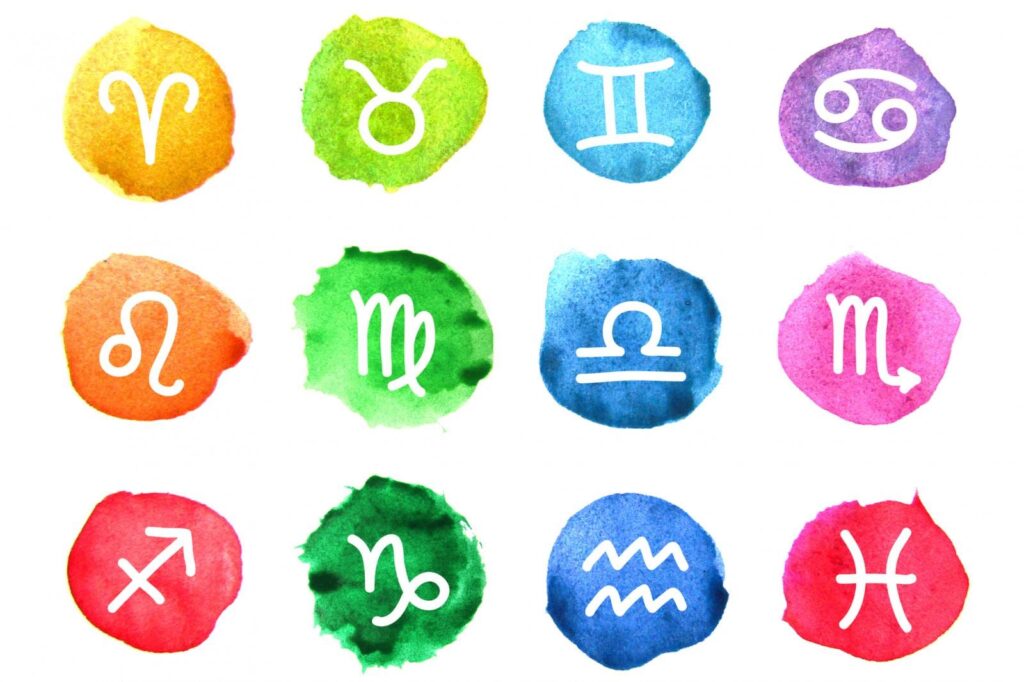
Hot Take: Ice Cream Sundays over Nugget Thursdays
All Providence College students look forward to lunch at Ray on Thursdays, when heaps of chicken nuggets paired with delectable curly fries grace the main station. Although chicken nugget Thursday is the highlight of the week for many, there is another strong contender: hard ice cream Sundays.
Every Sunday night at Ray, a selection of hard ice cream is available for dessert. On all other days of the week, ice cream is limited to soft serve, with the only options being vanilla, chocolate, or swirl.
On hard ice cream night, however, multiple varieties ensure that all students get a taste of their favorites, or maybe try a new flavor. Typical flavors include mint chocolate chip, birthday cake, cookie dough, and similar staples. To be festive, holiday flavors are offered at corresponding points of the year, such as pumpkin in the fall or peppermint at Christmas.
The joy of hard ice cream night is never knowing exactly which flavors are offered; every week features a different variety of delicious ice cream. Chicken nugget Thursday, on the other hand, is the same every single week. Nuggets, curly fries, eat, repeat.
The same meal for lunch every week starts to become old at a certain point. The novelty wears off, and cravings for a sandwich or frustration because of the long lines overcomes the desire for nuggets. The unpredictability of hard ice cream Sunday guarantees enthusiasm every week.
Be sure to remember this underrated tradition and grab a scoop next Sunday.
—Elizabeth McGinn ’21
People often roll their eyes when the topic of astrology is brought up in discussion. Critics of astrology ridicule the idea that earthly events and affairs can be influenced by the way celestial bodies in the universe align.
Although there is little scientific evidence that supports the validity of astrology, horoscopes still have a lot to offer.
Horoscopes are a quick source of entertainment that can easily add a little more fun to your day. Even if you do not follow the advice given in your horoscope, it is still amusing to see what it predicts will happen in your future.
The same logic applies to the topic of fortune cookies. After ordering Chinese take-out, people look forward to opening the fortune cookies that typically come along with their meals. Even if they do not believe their fortune is accurate or take any action after reading it to make it come true, people are nonetheless eager to find out what the little piece of paper has to say.
Though it is ill-advised to make any major life decisions solely based on what your horoscopes say, this does not mean that people should be so quick to dismiss them. Horoscopes can help boost your self-confidence and optimism and, in a world where things can often feel out of control, they can offer some sense of order and guidance. As long as they are taken with a grain of salt, horoscopes are relatively harmless and enthusiasts of astrology should not be mocked for joining in on the fun.
—Kelly Wheeler ’21
Share Study Space This Finals Season
Finals season is here, which means the stress to find that perfect place to study is more intense than ever. With classrooms occupied for exams and the influx of students in the library, locating the space one needs for reviewing material is often more stressful than the exams themselves.
This competition leads to all sorts of desperate measures. From attempts to reserve rooms to marking them as their own, students at Providence College have thought of it all, except for the impact their actions are having on their fellow students.
For students who are studying in large lecture halls, it is especially frustrating when others come in, claiming they have a study group there and kick others out. These lecture halls are not owned by the students, and commandeering rooms through these methods is extremely disrespectful.
Similarly, attempts to mark a room as one’s own, by leaving their things there, shows a distressing disinterest in recognizing that exams are stressful for all students. This behavior is increasingly concerning when students vacate the room for hours at a time.
Sure, there is a fear that the room will be snatched from their hands, but that does not give them the liberty to prevent others from using the space in the meantime.
While there is no easy way to eliminate the stress induced by final examinations, we can all do ourselves a favor by sharing the spaces on campus with other students, reducing these worries and helping finals week go much smoother.
—Joshua Chlebowski ’21
What is Happiness? (If You Know It, Clap Your Hands)
by The Cowl Editor on November 29, 2018
Opinion
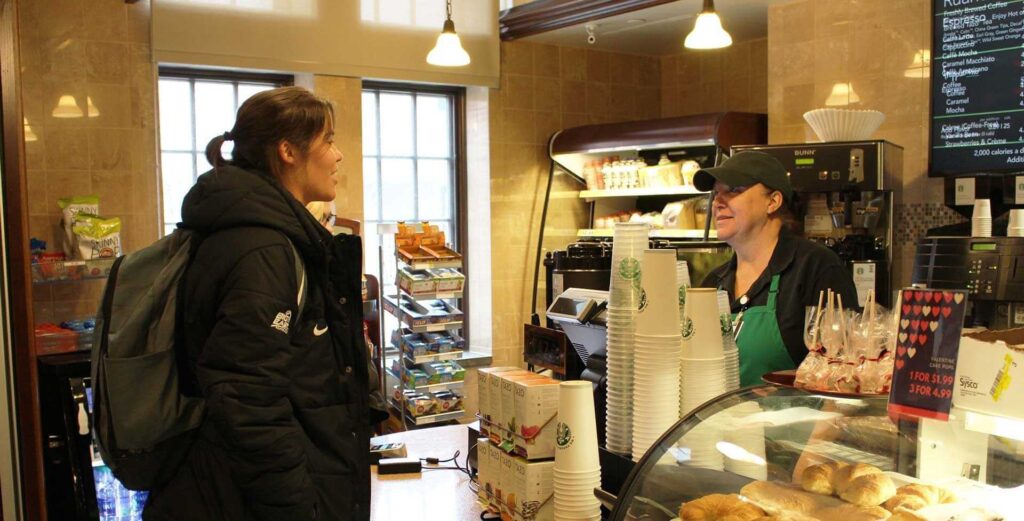
by Elizabeth McGinn ’21
Opinion Staff
Happiness: a state of being or emotion ranging from contentment to joy. Associated with sunshine, holiday mornings, the smell of freshly baked cookies, and all other delightful moments.
While people generally search for this elusive emotion, what does it truly mean? Or can we even attain it?
In his Nicomachean Ethics, which many of us read in Development of Western Civilization, Aristotle articulates the classical definition of happiness. Eudaimonia, a Greek word commonly translated as happiness or welfare, can only be achieved through virtue paired with reason. Reaching a state of eudaimonia is the highest human ideal.
Although many still pursue happiness as an end goal in life, the precise meaning of happiness is relative. It depends on values, experience, and personality.
What one might define as happiness might be abhorred by the next.
So what can happiness be for people today?
Success and happiness go hand in hand for many, often with wealth and status as coinciding elements.
The stereotypical recipe of success includes an impressive and prestigious job, hefty bank account, luxury cars and mansions: a mixture of recognition and money. Even with the highest-paying job or endless accolades, a critical piece of the puzzle is still missing.
Who will share in the joy of winning that coveted award? Or who will be there to help enjoy the fruits of labor? Connections with others, whether they are family, friends, or lovers, is a crucial aspect of happiness.
As social beings, we rely on the presence and company of people. Even the most “successful” person, without anyone at his or her side, can also be the most miserable.
Happiness, so far, consists of success and human connection. In contrast to Aristotle’s definition, this modern articulation lacks the concept of virtue.
While the particular idea of male excellence that Aristotle employs in virtue cannot be translated to modern day, his emphasis on morality still applies.
Because money is often associated with success, it is important to note the common saying that money cannot buy happiness.
Although money is necessary for survival, it is not the epitome of a happy life.
Instead, a person’s morals should value other things much more highly than money, such as compassion and generosity.
After all, the most evil people can boast of their bulging wallets and throngs of followers, but without a strong moral basis, they can never attain true happiness.
Happiness, then, is based on success, human connection, and morals. Although this general definition can apply to most people, can we actually achieve it?
The short, albeit pessimistic answer, is no. The ultimate, lofty ideal of happiness is only reserved for the select few who manage to align their cards in just the right manner.
An ideal is only the most perfect example, with reality often falling short. But the vast majority who do not correspond to the lucky few considered happy under this ideal are not hopeless.
On a day to day basis, happiness can be found in the smallest, but also most meaningful, moments. Rushing to Dunkin’ before a test to find there is no line, carefree laughter with friends at dinner, or jumping into bed at the end of a stressful day are all glimpses into true happiness.
Look for the small things, revel in them, and happiness can be only steps away.
